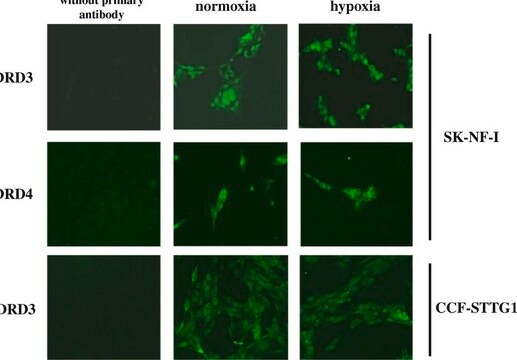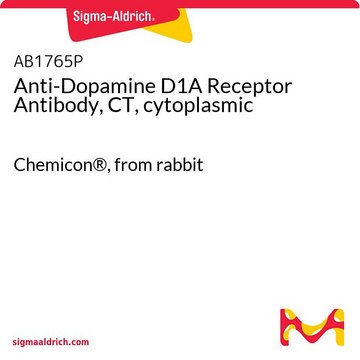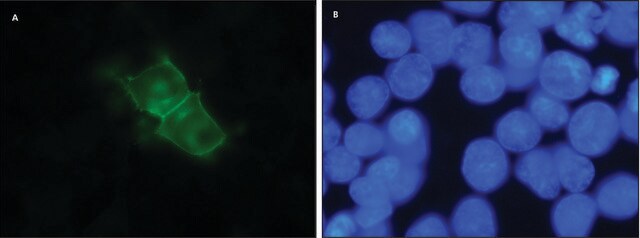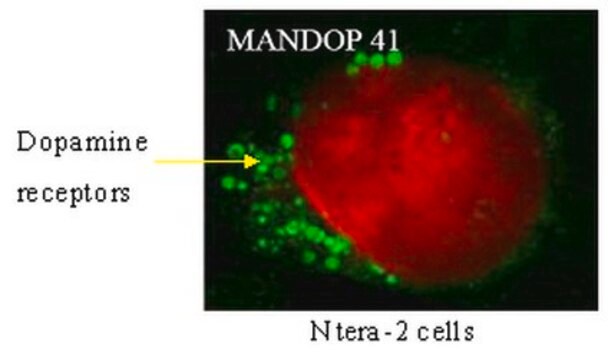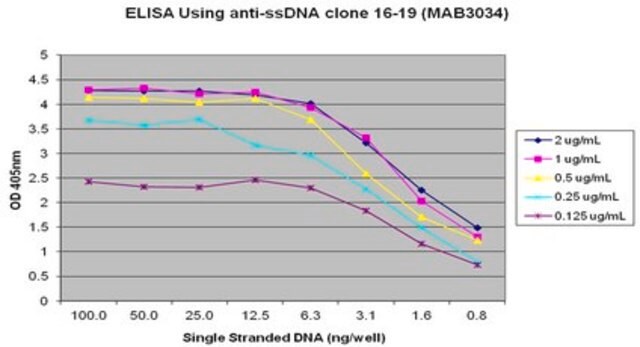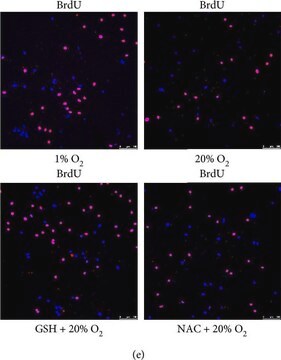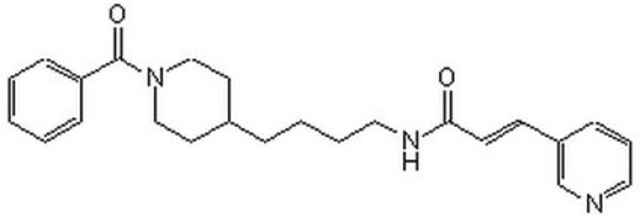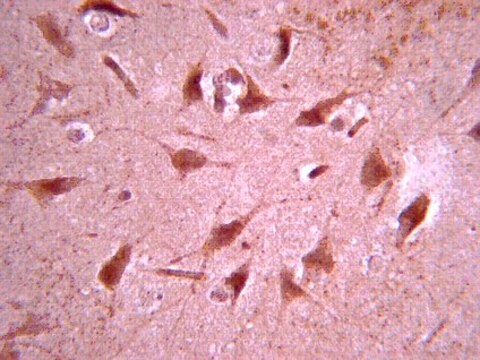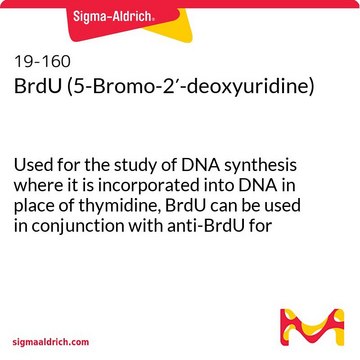AB1784P
Anti-Dopamine D1A Receptor Antibody, 4th Extracellular Domain
Chemicon®, from rabbit
About This Item
Polecane produkty
pochodzenie biologiczne
rabbit
Poziom jakości
forma przeciwciała
affinity purified immunoglobulin
rodzaj przeciwciała
primary antibodies
klon
polyclonal
oczyszczone przez
affinity chromatography
reaktywność gatunkowa
rat
producent / nazwa handlowa
Chemicon®
metody
ELISA: suitable
immunohistochemistry: suitable
western blot: suitable
numer dostępu NCBI
numer dostępu UniProt
Warunki transportu
dry ice
docelowa modyfikacja potranslacyjna
unmodified
informacje o genach
human ... DRD1(1812)
Specyficzność
Immunogen
Zastosowanie
Western blot: 1-10 μg/mL (Chemiluminescence technique). An antibody made to this peptide has been shown to detect 2 proteins of 50 and 75 kDa in solubilized hippocampal membranes. The 75 kDa band was not visible in striatum (Huang, 1992; O′Connel, 1995). Approximately 100-400 μg of protein/lane should be loaded to visualize the 75 kDa band (Huang, 1992; O′Connel, 1995) that is present in relatively small amounts.
ELISA: 0.5-1.0 μg/mL using 1 μg/mL of control peptide per well.
The immunogen peptide is available (Cat. No. AG266) for use in ELISA or antibody blocking studies. AG266 is not recommended for use as a western blot positive control.
Optimal working dilutions must be determined by end user.
Neuroscience
Neurotransmitters & Receptors
Postać fizyczna
Przechowywanie i stabilność
Komentarz do analizy
POSITIVE CONTROL: rat striatal membranes (western blot)
Inne uwagi
Informacje prawne
Oświadczenie o zrzeczeniu się odpowiedzialności
Nie możesz znaleźć właściwego produktu?
Wypróbuj nasz Narzędzie selektora produktów.
Kod klasy składowania
10 - Combustible liquids
Klasa zagrożenia wodnego (WGK)
WGK 2
Temperatura zapłonu (°F)
Not applicable
Temperatura zapłonu (°C)
Not applicable
Certyfikaty analizy (CoA)
Poszukaj Certyfikaty analizy (CoA), wpisując numer partii/serii produktów. Numery serii i partii można znaleźć na etykiecie produktu po słowach „seria” lub „partia”.
Masz już ten produkt?
Dokumenty związane z niedawno zakupionymi produktami zostały zamieszczone w Bibliotece dokumentów.
Nasz zespół naukowców ma doświadczenie we wszystkich obszarach badań, w tym w naukach przyrodniczych, materiałoznawstwie, syntezie chemicznej, chromatografii, analityce i wielu innych dziedzinach.
Skontaktuj się z zespołem ds. pomocy technicznej